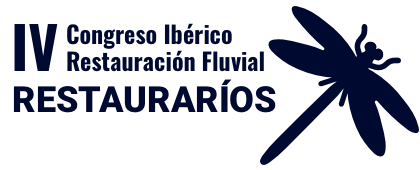Organised jointly by the CIREF and the Tagus Hydrographic Confederation, and sponsored by Wetlands International Europe, the 4th Iberian Congress of River Restoration (RestauraRios) was held in Toledo, Spain from June 21 to 23, with the aim of deepening the role that river restoration will play in supporting healthy rivers in the face of the climate crisis and global change.
More than 420 participants showcased a range of restoration projects, techniques, experiences and reflections in more than 150 communications and 10 practical workshops, grouped into five thematic blocks. The Congress ended with a field trip on the 23rd to visit the restoration project of the Manzanares River as it passes through El Pardo on the outskirts of Madrid.
The Congress took place at a critical time for the health of the European rivers. Under the Water Framework Directive, rivers must be in good ecological health by 2027. The pending Nature Restoration Law aims to remove river barriers to allow at least 25,000 km of rivers to become free-flowing by 2030. Equally, the Spanish National Strategy of River Restoration is being updated now, set the same horizon to achieve results. Moreover, different strategies with objectives to improve the environment by 2030 are the Spanish Strategy of Bio-economy (Ministry of Finance and Competitiveness), Agenda 2030 for the Sustainable Development or the Strategic Plan of CIREF 2020-2030.

The following conclusions were summarised according to the five topics addressed in the Congress.
Restoration of life in rivers: the fragmentation of rivers remains a major concern and there is still unfinished business, such as barriers to migration. Actions to improve the passage of fish around barriers are postulated as the main reason for the increase in the population of migratory fish species, so including the recovery of connectivity in planning is essential. In this sense, having exhaustive inventories and tools that include biological parameters to help decision-making when prioritising actions are key factors, as well as the development and validation of new passage systems. Invasive species, their early detection and control, are another topic in which work continues.
Flow, sediment, processes and river space: it was concluded that in the case of the demolition of dams it is important to plan for sediment management. Knowledge about its transport is fundamental, both through experimental work and theoretical tools. The improvement of the lateral and vertical connectivity of rivers through the recovery of old arms and the reintroduction of the coarse sediment are essential actions to reverse the incision, increase the lateral hydraulic connectivity and groundwater levels. These aspects also improve flood risk management. On the other hand, the application of the hydromorphology protocol indicates that the relationship between hydromorphology and ecological status should be reviewed, as well as the indicators that analyse vertical connectivity.
Governance, management and protection of rivers: cooperation between the various agents with competence or presence in the territory is necessary for the optimal development of restoration projects. It is essential to generate synergies between the administrations involved, the academic world, local agents, conservation movements and the private sector. Likewise, to ensure the success of the restoration work, good communication and dissemination are key. It is relevant to interweave policies and general instruments of conservation and restoration with hydrological planning. Restoration must be approached from different approaches, with different techniques and involving several actors, both from planning and resource management. An advance in river restoration is to change the paradigm of “cleaning”, dredging of channels or protection of banks as the only ways to improve rivers, directing these actions towards ecological restoration, integrated into the territorial green infrastructure.
Rivers and environmental education, awareness, dissemination and participation: it was concluded that the training, integration and participation of local communities in restoration projects is essential. The strengthening of social capacities and participation in decision-making is more necessary than ever, since it reduces vulnerability to the risks of living with the river. Working with the people of the territory in the search for the traditional fluvial cultural landscape, and the historical uses makes them loyal. It has been noted the importance of recovering the memory of rivers absolutely erased, especially in urban environments where it is frequent that no trace of them remains. The conflict around restoration interventions must be an opportunity for transformation and as such must not be avoided. The participation must be real, starting in the phases prior to the projects, and continuing during the realisation of the works and at the end, as a return to the population.
Urban rivers: a challenge in river restoration: there is uncertainty about the definition and delimitation of urban stretches of public waterways. Naturalised urban stretches in which hard infrastructures have been removed and river dynamics have been improved, provide more ecosystem and social benefits than fully channelled rivers. However, after the actions, management and monitoring are essential to evaluate the degree of compliance with the established objectives and to contribute to the permeability of the measures. In urban sections, the usual hydromorphological indicators are not useful. Specific indicators should be developed.
More information is available on the RestauraRios website

